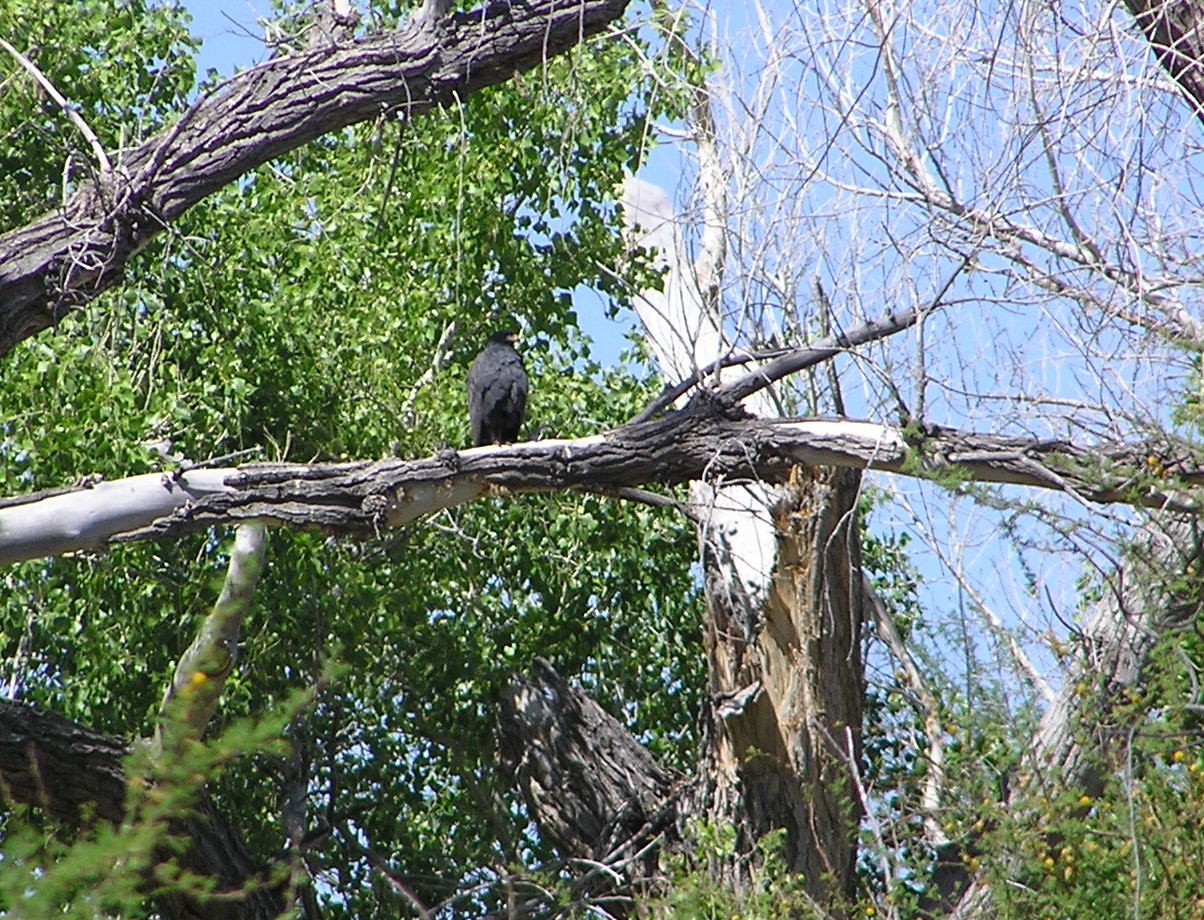Though the total solar eclipse set the date of our trip to Texas, we had long wanted to go birding there. We allowed time before and after the eclipse to visit some of the better known birding hotspots. We began our trip, before the eclipse, by driving from Austin down to Terlingua, a community adjacent to Big Bend National Park and spent three days birding some popular hotspots in the park: Sam Nail Ranch, Rio Grande Village, Dugout Wells, Cottonwood Campground, and the Chisos Mountains Basin.
We stayed at sleeper cabins that had no potable water, so it was a good thing we had brought our own water. The weather was a big change from Idaho where there was still snow on the hills out our window. Ninety degrees with hot dusty winds gusting to 40 miles per hour was our experience. At night, the turkey vultures flew in to roost on a cell tower near our lodging. At dawn, seen below, they stretch their wings to warm in the morning sun.
Our first stop was at Sam Nail Ranch. Tired from traveling, we were not the early birds, and it was afternoon by the time we walked the trail.
We proceeded on to the Rio Grande Village campground where we were greeted by the begging Greater Roadrunner. They seemed very acclimated to campground life.
A Ladder-backed Woodpecker was foraging the in the trees.
The next morning while we sat outside our cabin, enjoying the cooler morning temperatures and drinking coffee, we observed a Lark Bunting foraging nearby.
Our second trip into the park took us to the Visitor Center, where this Curve-billed Thrasher was seeking shade and very audibly calling.
We proceeded to Cottonwood Campground, where some helpful birders pointed out the Common Black-hawk, behind the sign that said, "No entry, Black-hawk Nesting Area".
There were also numerous Gray Hawk residing there.
And, Vermillion Flycatchers everywhere.
On our third and final day visiting Big Bend, we first went early (relatively speaking, early for us) to the Dugout Wells area, which was rich with birds even at the hour we arrived. Bell's Vireo were prevalent.
We then went to wait in line to be permitted to drive up to the Chisos Basin. The parking is limited there, so when a car came out, another was allowed to drive up. This was confusing to those at the back of the line, as there was only one volunteer at the head of the line and no explanatory signage. I did some volunteer work for a while, going to each new arrival and explaining the options which included driving to the head of the line and making a left turn to drive back down the road if one was not interested in the roughly 20-minute delay.












No comments:
Post a Comment